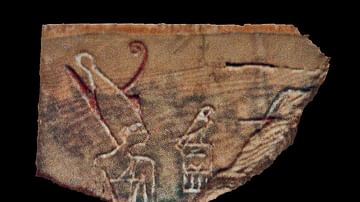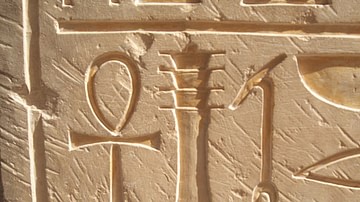Review

| Title: | Death and Burial in Ancient Egypt |
|---|---|
| Author: | Salima Ikram |
| Publisher: | Longman |
| Published: | 2003 |
| Pages: | 256 |
Dr. Salima Ikram's Death and Burial in Ancient Egypt is among the best works on the subject presently on the market. Dr. Ikram earned her Ph. D. in Egyptology and Museum Studies at Cambridge and yet her work breathes with a love of the subject matter and, refreshingly, lacks the academic jargon which mars so many otherwise fine books on this subject. Dr. Ikram has recreated the mummification process in modern-day laboratories and so brings a practical, as well as scholarly, approach to the subject. Regarding mummification, she writes:
The key ingredient in the mummification was natron, or netjry, divine salt. It is a mixture of sodium bicarbonate, sodium carbonate, sodium sulphate and sodium chloride that occurs naturally in Egypt, most commonly in the Wadi Natrun some sixty four kilometres northwest of Cairo. It has desiccating and defatting properties and was the preferred desiccant, although common salt was also used in more economical burials (55).
This book takes a reader from the early history of ancient Egypt through the beliefs and funerary practices of the people and includes the development of the mastaba tombs and the later pyramids. An excellent work and highly recommended.
About the Reviewer
Cite This Work
APA Style
Mark, J. J. (2013, January 09). Death and Burial in Ancient Egypt. World History Encyclopedia. Retrieved from https://www.worldhistory.org/review/20/death-and-burial-in-ancient-egypt/
Chicago Style
Mark, Joshua J.. "Death and Burial in Ancient Egypt." World History Encyclopedia. Last modified January 09, 2013. https://www.worldhistory.org/review/20/death-and-burial-in-ancient-egypt/.
MLA Style
Mark, Joshua J.. "Death and Burial in Ancient Egypt." World History Encyclopedia. World History Encyclopedia, 09 Jan 2013, https://www.worldhistory.org/review/20/death-and-burial-in-ancient-egypt/. Web. 26 Apr 2025.


